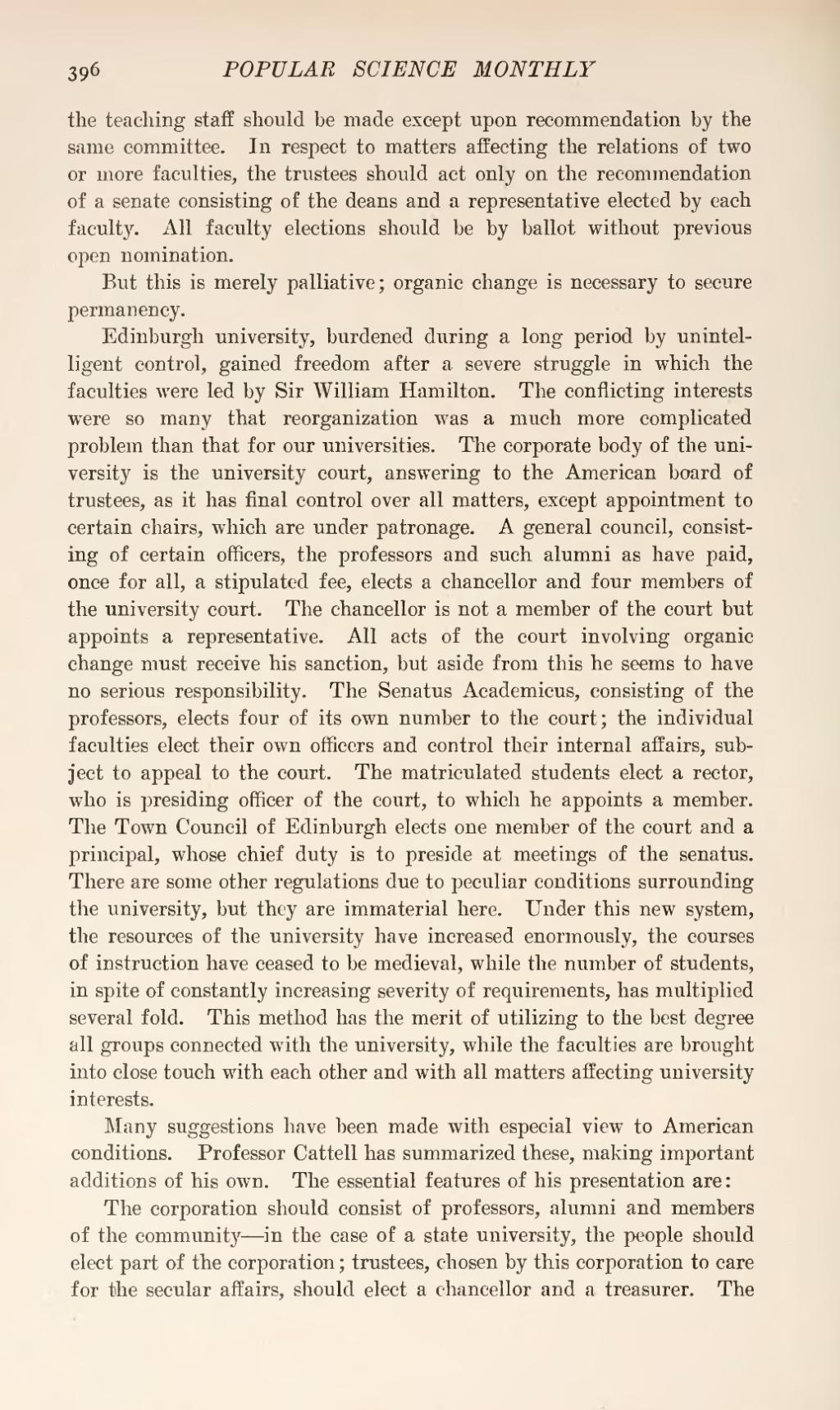the teaching staff should be made except upon recommendation by the same committee. In respect to matters affecting the relations of two or more faculties, the trustees should act only on the recommendation of a senate consisting of the deans and a representative elected by each faculty. All faculty elections should be by ballot without previous open nomination.
But this is merely palliative; organic change is necessary to secure permanency.
Edinburgh university, burdened during a long period by unintelligent control, gained freedom after a severe struggle in which the faculties were led by Sir William Hamilton. The conflicting interests were so many that reorganization was a much more complicated problem than that for our universities. The corporate body of the university is the university court, answering to the American board of trustees, as it has final control over all matters, except appointment to certain chairs, which are under patronage. A general council, consisting of certain officers, the professors and such alumni as have paid, once for all, a stipulated fee, elects a chancellor and four members of the university court. The chancellor is not a member of the court but appoints a representative. All acts of the court involving organic change must receive his sanction, but aside from this he seems to have no serious responsibility. The Senatus Academicus, consisting of the professors, elects four of its own number to the court; the individual faculties elect their own officers and control their internal affairs, subject to appeal to the court. The matriculated students elect a rector, who is presiding officer of the court, to which he appoints a member. The Town Council of Edinburgh elects one member of the court and a principal, whose chief duty is to preside at meetings of the senatus. There are some other regulations due to peculiar conditions surrounding the university, but they are immaterial here. Under this new system, the resources of the university have increased enormously, the courses of instruction have ceased to be medieval, while the number of students, in spite of constantly increasing severity of requirements, has multiplied several fold. This method has the merit of utilizing to the best degree all groups connected with the university, while the faculties are brought into close touch with each other and with all matters affecting university interests.
Many suggestions have been made with especial view to American conditions. Professor Cattell has summarized these, making important additions of his own. The essential features of his presentation are:
The corporation should consist of professors, alumni and members of the community—in the case of a state university, the people should elect part of the corporation; trustees, chosen by this corporation to care for the secular affairs, should elect a chancellor and a treasurer. The
